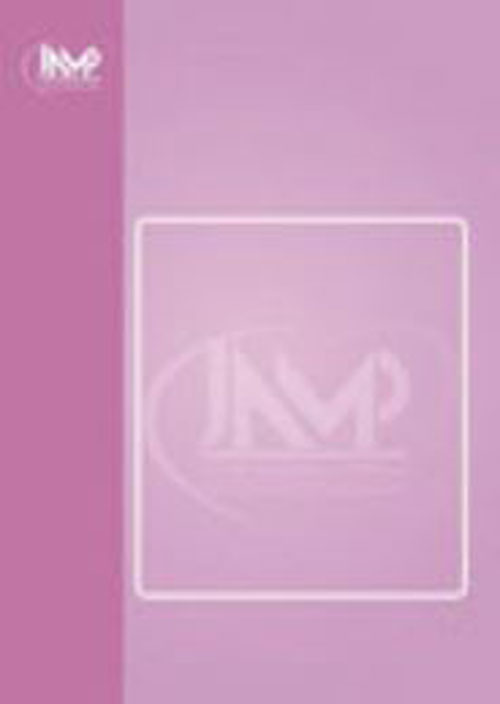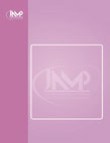فهرست مطالب

Journal of Advances in Medical Education & Professionalism
Volume:9 Issue: 4, Oct 2021
- تاریخ انتشار: 1400/07/10
- تعداد عناوین: 10
-
-
Pages 189-197IntroductionMedical students self-report insufficient training in topics of gender and sexuality in medicine, which may ultimately lead to negative health outcomes in patients for whom they willprovide care. This study aims to identify whether a studentinitiated lecture series on topics related to gender and sexual health leads to greater student comfort with discussing topics related to diverse sexual content.MethodsMedical students matriculated during two consecutive academic years were invited to participate in the lecture series. Investigators administered anonymous pre- and post-seriessurveys (n=152 and 105 respondents, respectively) using google forms. Respondents rated their comfort levels discussing relevant topics and provided narrative feedback concerning strengths andareas for improvement of the lecture series. Overlaps between the 95% confidence intervals around pre- and post-series percentage of students comfortable/very comfortable discussing each topicwere examined to compare pre- vs post-series comfort ratings. Narrative comments were reviewed for thematic feedback.Results105 medical students completed the lecture series, with 80% identifying as female. Self-assessed comfort levels across all seminar topics were greater in post- versus pre-lecture seriessurveys with the following topics showing the biggest differences (percentage of students “somewhat” or “very” comfortable [95% confidence intervals]: discussing sexuality with gender (68%[59-77] vs. 29%[22-36]) and sexual minority patients (84%[77-91] vs. 49%[41-57]), HIV prevention counseling (70%[61-78] vs. 20%[20-34]), identifying female genital cutting (44%[34-53] vs. 11%[6-16]), and discussing intimate partner violence (65%[55-74] vs. 33%[25-40]). Qualitative analysis indicated respondents found the lectures to be effective and believed they should be integrated into the required medical school curriculum.ConclusionOur student-initiated lecture series was associated with greater student comfort discussing topics related to gender and sexuality with patients. This framework represents a usefulmethod to address gaps in medical education and has the potential to improve health outcomes in multiple populations.Keywords: Medical Students, Curriculum, Gender, sexual minorities, Sexual Health, Sexuality, Gender Identity
-
Pages 198-204IntroductionThe social accountability (SA) challenges health professional training institutes to reorient their missions to train the graduates aligned with the society’s priority needs and produce quality, population centered care. The objective was to assess the knowledge, perceptions, and implementation of SA by nursing education institutions.MethodsThe cross-sectional observational survey was conducted at the Higher Institute of Health Professions and Techniques of Marrakech (ISPITS-M) and its annexes between May 17 and June 4, 2020, using a mixed methodology. The data were collected through an online questionnaire, which was tested with 11 students and teachers. It was completed by 50 teachers and 213 students, recruited on a voluntary basis and was developed based on the literature review, aspects and principles of social accountability. In addition, eight semi-structured interviews were performed with administrative staff recruited by Purposive sampling.ResultsOut of a total of 924 students and 75 teachers, 213 students and 50 teachers participated in the survey, with a response rate of 23% and 67% simultaneously. The average age was 40.2±8.9years for the teachers and 19.7±1.3 years for the students. 36% of the students had no knowledge of SA; teachers and leaders had different perceptions and the concreteness of the aspects of SA was low. The students felt they were less prepared in social determinants of health (85%), community lifestyles to be served (85%), outreach care, and frontline work (83%).ConclusionThe knowledge of SA is average; there is a need to raise awareness of SA in addition to strengthening training programs and the concretization of actions in this direction.Keywords: Social accountability, Nursing students, Knowledge, Medical school, COVID-19
-
Pages 205-211IntroductionMedical professionalism is an essential part of training and professional development of medical students. Unprofessional behavior in medical school may lead to professional misconduct in the future careers. The Learner’s Attitude of Medical Professionalism Scale (LAMPS) is a self-assessment questionnaire. It has been used in this study to assess and compare self-reported attitudes about different domains of medical professionalism among First and Final Year studentsand Faculty of Shalamar Medical and Dental College (SMDC). LAMPS has been used to identify the gaps in the attitudes of medical students and professionals, which can be addressed through a training program of professionalism.MethodsThis is a cross-sectional survey conducted in SMDC from June to Dec 2018. First Year and Final Year Students and Faculty were recruited by non-probability convenience sampling. The sample size was calculated by the Cochran’s Formula, keeping the level of significance at 5% and margin of error at 3%. The reliability of LAMPS using Cronbach’s alpha is 0.7. It has been validated by 32experts followed by pilot testing. The domains of professionalism were scored according to Likert Scale. The data were analyzed using SPSS 24. T-test was used for comparison of the means.ResultsThere were a total of 204 study participants; 88 students from First Year, 78 from Final Year and 38 Faculty Members. Honor/Integrity was the most valued trait and Excellence/Autonomy wasthe lowest scored domain of medical professionalism. There was a significant difference among attitudes of the First and Final Year students in the domains of Excellence/Autonomy and Altruism.Excellence/Autonomy and Honor/Integrity showed a significant difference between the Final Year students and Faculty.ConclusionsMedical students and faculty have significantly different views of certain attributes of professionalism. Honor/Integrity was the most valued trait and Excellence/Autonomy was the lowest valued trait of medical professionalism.Keywords: Assessment, Medical professionalism, Medical Students, Faculty
-
Pages 212-221IntroductionThe realization of professionalism and its desirable consequences, as the most important goal of medical education, primarily depends on identifying the process and mechanism ofthe professional identity formation, which in turn requires the accurate identification of components and structure of the concept of professional identity. Therefore, the aim of this study was tosynthesize a static structural model for professional identity, based on the results of our previous research.MethodsIn this study the theory or model construction methodology was used to synthesize a static structural model of professional identity formation for medical students. In this regard, the Walker and Avant method was followed through three steps: specifying focal concepts, reviewing the literature, and organizing concepts into an integrated and efficient representation.ResultsIn this study, based on the analysis of 9 selected conceptual models in the field of socialization and professional identity, first the key concepts of each model were extracted and then by carefully examining these concepts and determining their relationships and reviewing related texts, dimensions and components of professional identity were determined and presented in the form of a comprehensive structural static model.ConclusionThe advantage of the proposed model over the existing models is the explicit presentation of the dimensions, constructs, and sub-constructs of the concept of professionalidentity. In addition, this model can be used as a general pattern in all non-medical professions.Keywords: Professional identity, Professional socialization, Medical Students, Theory, Synthesis
-
Pages 222-230IntroductionThe use of new learning methods to improve the educational processes is inevitable in the field of dentistry. Due to the positive effects of mobile learning on the students’ learning and skills, we decided to design a software in the required areas. Considerations of systemic diseases, medications, emergencies, prophylaxis, tests interpretation, lesions diagnosis, cephalometric,and cast analysis were the topics required.MethodsThis semi-experimental study was carried out in Faculty of Dentistry, Tabriz University of Medical Sciences during 2020. DentAll software was developed using Android Studio software. It is an educational and decision-making support system. The satisfaction and perceptions of 10 professors, 5 post-graduate students, and 30 senior dental students about the designed software were assessed using a questionnaire based on a 5-part Likert scale. The senior students were invited and the pre-test was taken to assess the students’ knowledge; then, the designed software was provided by the administrator. At the end of the process, the post-test was taken. Paired samples t-test was used to compare the results of the pre-test and post-test. The data were analyzed using the Statistical Package for Social Sciences (SPSS) 17.0. The significance level was established at a P<0.05.ResultsThe mean scores of the pre-test and post-test were 16.5±1.49 and 18.2±0.99, respectively. The statistical analysis showed that the difference between the mean scores of the pretest and post-test was statistically significant (P<0.001). 46.7% of the professors and post-graduate students expressed their overall satisfaction as very high, 46.7% as high, and 6.7% as average. Furthermore, 50% of the students expressed their overall satisfaction as very high, 36.7% as high, and 13.3% as moderate.ConclusionThe designed comprehensive software satisfied the students and the professors who used it and the students’ scores increased after use. This software had capabilities such as easy access to the resources, learning anytime and anywhere, increasing the students’ interest and motivation, etc. from the point of view of the commentators. To the best of our knowledge, thiscomprehensive educational aid has not been designed previously and it was effective in improving the students’ learning, scientific knowledge and treatment planning.Keywords: dentistry, education, Learning, Software
-
Pages 231-238IntroductionThe flipped classroom instruction can be an opportunity to make educational changes in class contents, which means this model can be a way to rethink learning and the educational process. The present study aimed to investigate the effectiveness of flipped classroom and traditional teaching methods on the components of self-determination and the class perception among university students.MethodsThis is an experimental study with a pre-test and posttest design and a control group. The study population comprised of all female students of Farhangian University in Ahvaz city in theacademic year 2019. The sample consisted of 36 students selected by convenience sampling. We randomly divided the participants into experimental (n=18) and control (n=18) groups. The researchinstruments included the Basic Psychological Need Satisfaction and the Class Perception Questionnaire. The experimental group received the flipped teaching program during six 120-minutesessions once a week; however, the control group received the traditional teaching method. Data were analyzed by descriptive and inferential statistics, such as mean, standard deviation, analysis of covariance (ANCOVA), and multivariate analysis of covariance (MANCOVA).ResultsThe results indicated that there was a significant difference between the flipped classroom and traditional teaching (P<0.05) on the components of self-determination and the class perception among university students.ConclusionAccording to the results, the flipped teaching method had greater impacts on the components of self-determination and class perception in university students, compared to the traditional method.Keywords: Teaching, Self-determination, Students
-
Pages 239-243
During the recent COVID-19 pandemic, the clinical exposure of medical students has been hindered while the impact on medical education is under investigation. The potential negative impact ofmedical students on transmission rates, along with the shortages of Personal Protective Equipment (PPE), their lack of proper training, and their limited ability to work independently, give rise to reasonable concerns regarding their involvement in pandemic management. Nevertheless, the heavy workload could soon provoke severe deficiencies in the frontline medical workforce. Hence, the possibility of covering gaps in human resources by effectively deploying students should not be rejected in advance. Additionally, a pandemic poses a valuable learning opportunity for high-quality medical education. The aim of this commentary is to present a discussion with supporters and opponents of medical student engagement in the pandemic management and their involvement in placements requiring physical contact with patients. We also attempt to elucidate the necessary conditions for the students’ possible involvement in clinical settings.
Keywords: COVID-19, Pandemics, Medical education, Medical Students, Role


